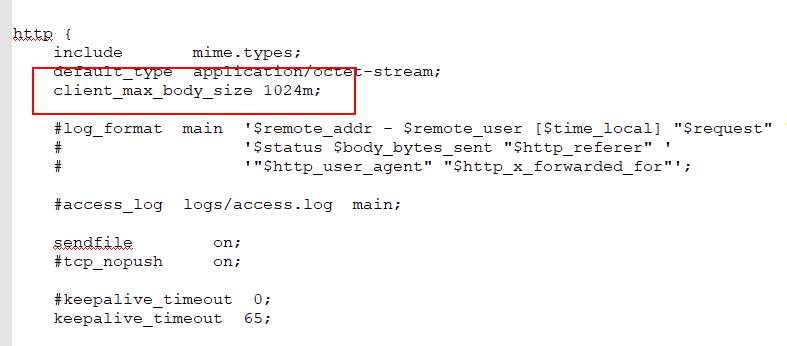Java文件上传实例并解决跨域问题
目录
每次上传文件都会经过网关,必然会给网关带来很大的压力,那我们如何绕过网关呢?
1.在网关中配置白名单 ,这样也会走网关,只是压力少了一点点
2.在nginx做转发,当请求文件上传时,直接转到相应的服务
在Web应用系统开发中,文件上传和下载功能是非常常用的功能,今天来讲一下JavaWeb中的文件上传功能的实现。
了解MultipartFile接口
我们实现文件的上传用到了Spring-web框架中的 MultipartFile接口,MultipartFile接口的源码注释中说“MultipartFile接口是 在大部分请求中接收的上载文件的表示形式。”
A representation of an uploaded file received in a multipart request.
The file contents are either stored in memory or temporarily on disk. In either case, the user is responsible for copying file contents to a session-level or persistent store as and if desired. The temporary storage will be cleared at the end of request processing.
常用方法如下表
| Method Summary | ||
|---|---|---|
byte[] |
获取文件的字节数组 | getBytes()Return the contents of the file as an array of bytes. |
String |
获取文件的类型 | getContentType()Return the content type of the file. |
InputStream |
获取文件的输入流 | getInputStream()Return an InputStream to read the contents of the file from. |
String |
获取文件名 | getName()Return the name of the parameter in the multipart form. |
String |
获取原始文件名(防止篡改文件类型) | getOriginalFilename()Return the original filename in the client’s filesystem. |
long |
获取文件的大小,以字节的形式) | getSize()Return the size of the file in bytes. |
boolean |
判断文件是否为空 | isEmpty()Return whether the uploaded file is empty, that is, either no file has been chosen in the multipart form or the chosen file has no content. |
void |
将接收到的文件传输到给定的目标文件。 | transferTo(File dest)Transfer the received file to the given destination file. |
文件上传业务代码
Controller类
/**
* @Author: 小小张自由
* @Date: 2021/7/6 - 20:56
* @Description: 文件上传
* @version: 1.0
*/
@Controller
@RequestMapping("upload")
public class UploadController {
@Autowired
private UploadService uploadService;
@PostMapping("image")
public ResponseEntity<String> uploadImage(@RequestParam("file") MultipartFile file){
String url= this.uploadService.uploadImage(file);
if (StringUtils.isBlank(url)){
return ResponseEntity.badRequest().build();
}
return ResponseEntity.status(HttpStatus.CREATED).body(url);
}
}
Service类:写了具体的业务逻辑
/**
* @Author: 小小张自由
* @Date: 2021/7/6 - 21:01
* @Description: 文件上传
* @version: 1.0
*/
@Service
public class UploadService {
//用于判断文件的类型,暂时只判断了“image/gif","image/jpeg”
private static final List<String> CONTENT_TYPES= Arrays.asList("image/gif","image/jpeg");
private static final Logger LOGGER= LoggerFactory.getLogger(UploadService.class);
/**
* 业务逻辑代码
* @param file 文件的存储的url
* @return
*/
public String uploadImage(MultipartFile file) {
String originalFilename = file.getOriginalFilename();
//校验文件类型
//方法一:截取字符串
String afterLast = StringUtils.substringAfterLast(".", originalFilename);
//方法二:使用getContentType方法
String contentType = file.getContentType();
if (!CONTENT_TYPES.contains(contentType)){
LOGGER.info("文件类型不合法:"+originalFilename);
return null;
}
//校验文件内容
try {
//获取文件流
BufferedImage bufferedImage = ImageIO.read(file.getInputStream());
if (bufferedImage==null){
LOGGER.info("文件内容不合法:{}",originalFilename);
return null;
}
//保存到服务器 E:\Leyou\image
//将接收到的文件传输到给定的目标文件。
file.transferTo(new File("E:\\Leyou\\Image\\"+originalFilename));
//返回URL,进行回显
//可以使用Nginx-图片服务器
return "http://image.leyou.com/"+originalFilename;
} catch (Exception e) {
LOGGER.info("服务器内部错误:"+originalFilename);
e.printStackTrace();
}
return null;
}
}修改nginx配置,将文件存储到文件服务器中
修改Nginx的配置文件nginx.conf,监听80端口,设置root的值为:E盘
– 图片不能保存在服务器内部,这样会对服务器产生额外的加载负担
– 一般静态资源都应该使用独立域名,这样访问静态资源时不会携带一些不必要的cookie,减小请求的数据量
server {
listen 80;
server_name image.leyou.com;
proxy_set_header X-Forwarded-Host $host;
proxy_set_header X-Forwarded-Server $host;
proxy_set_header X-Forwarded-For $proxy_add_x_forwarded_for;
location / {
root E:\\Leyou\\image;
}
}每次上传文件都会经过网关,必然会给网关带来很大的压力,那我们如何绕过网关呢?
1.在网关中配置白名单 ,这样也会走网关,只是压力少了一点点
@Slf4j
public class AuthorizeFilter implements GlobalFilter, Ordered {
//白名单:存放放行的URL
private List<String> allowPaths;
@Override
public Mono<Void> filter(ServerWebExchange exchange, GatewayFilterChain chain) {
//获取请求的url路径
String path = request.getURI().getPath();
boolean flag=isAllowPath(path);
if (flag) {
log.info("请求在白名单中,leyou.filter: {}",path);
//放行
return chain.filter(exchange);
} else {
//写其他的业务逻辑
~~~~
}
}
private boolean isAllowPath(String path) {
//判断是否允许放行
if (allowPaths.contains(path)){
return true;
}
return false;
}2.在nginx做转发,当请求文件上传时,直接转到相应的服务
本实例使用了方法二、需要增加配置
server {
listen 80;
server_name api.leyou.com;
proxy_set_header X-Forwarded-Host $host;
proxy_set_header X-Forwarded-Server $host;
proxy_set_header X-Forwarded-For $proxy_add_x_forwarded_for;
# 新增加的配置,用于文件上传
location /api/upload {
proxy_pass http://127.0.0.1:8082;
proxy_connect_timeout 600;
proxy_read_timeout 600;
rewrite "^/api/(.*)$" /$1 break;
}
# 网关的配置
location / {
proxy_pass http://127.0.0.1:10010;
proxy_connect_timeout 600;
proxy_read_timeout 600;
}
}当这样配置之后,文件上传就不会过网关,减少了网关的压力。但是有引来了一个新问题那就是跨域。
解决上传文件出现跨域问题
由于Nginx将文件上传的请求直接转发到了具体服务中,不再走gateway,所以gateway中的跨域配置,不再生效了。 需要在文件上传这个服务中单独配置跨域。
写配置类CorsFilter
/**
* @Author: 小小张自由
* @Date: 2021/6/15 - 11:12
* @Description: 解决 跨域问题
* @version: 1.0
*/
@Configuration
public class LeyouCorsConfiguration {
@Bean
public CorsFilter corsFilter(){
//初始化配置对象
CorsConfiguration configuration = new CorsConfiguration();
//允许跨域访问的域名
configuration.addAllowedOrigin("*");
// configuration.setAllowCredentials(true); //运行携带cookie
configuration.addAllowedMethod("*"); //代表所有请求方法
configuration.addAllowedHeader("*"); //允许携带任何头信息
//初始化cors配置源对象
UrlBasedCorsConfigurationSource configurationSource=new UrlBasedCorsConfigurationSource();
configurationSource.registerCorsConfiguration("/**",configuration);
//返回CorSfilter实例,参数
return new CorsFilter(configurationSource);
}
}到此应该就可以上传了,但是还是报跨域,我已经配置好了啊,为什么还是报跨域呢?
在nginx配置中配置请求实体大小
我就想是不是Nginx的问题,然后我就一行一行的读配置,最后发现
nginx配置中没有配置请求实体大小
加上这行配置就好了
client_max_body_size 1024m;如果本篇博客对您有一定的帮助,大家记得留言+点赞+收藏哦。
版权声明:本文内容由互联网用户自发贡献,该文观点仅代表作者本人。本站仅提供信息存储空间服务,不拥有所有权,不承担相关法律责任。如发现本站有涉嫌侵权/违法违规的内容, 请发送邮件至 举报,一经查实,本站将立刻删除。
如需转载请保留出处:https://bianchenghao.cn/36692.html

